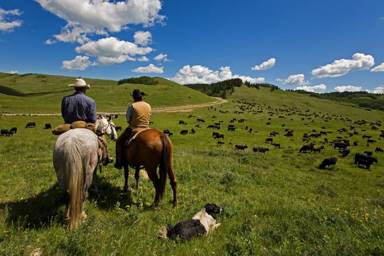PHYGROW
February 2023
|
Many in our community may be unaware that Dr. Jay Angerer has moved from Blackland to assume a supervisory position with USDA-ARS Livestock and Range Research Laboratory in Miles City, Montana. As a result, the Grazingland Animal Nutrition Laboratory (GAN Lab) and the Rangeland Decision-Support Laboratory (RDSL), as well as the support of the Nutrient Balance Analyzer (NUTBAL) and Livestock Market Information System (LMIS), have been moved from Blackland to The Texas A&M University Department of Rangeland, Wildlife and Fisheries Management under the leadership of Drs. William Fox and Doug Tolleson. |
 |
The development and management of the PHYGROW model and the Predictive Livestock Early Warning System (PLEWS) have been assumed by Dr. Javier Osorio Leyton at Blackland. The PLEWS is an early warning system for monitoring nutrition and livestock health in East Africa and Mongolia. It uses PHYGROW to estimate how variations in plant communities, soils, animal grazing (composition, demand, and timing), stocking rates, and weather impact carrying capacity, hydrology, stability of forage production, and animal performance. It is capable of modeling the growth dynamics of many plant species competing for limited resources while being grazed by multiple herbivore species competing for forage resources. Major users include NASA, USDA-NRCS, FAO, USAID, World Bank, Universities in South America (National Agrarian University (Peru) and Federal University of Ceara (Brazil)).
PLEWS also forms the basis for the NASA LEWS Decision Support System that uses NASA technologies and hydrologic modeling to monitor waterholes and forage availability in Mongolia. Dr. Osorio is using PHYGROW to simulate above-ground herb and shrub growth, forage consumption, and hydrologic processes for grazing lands of interest to NASA.
